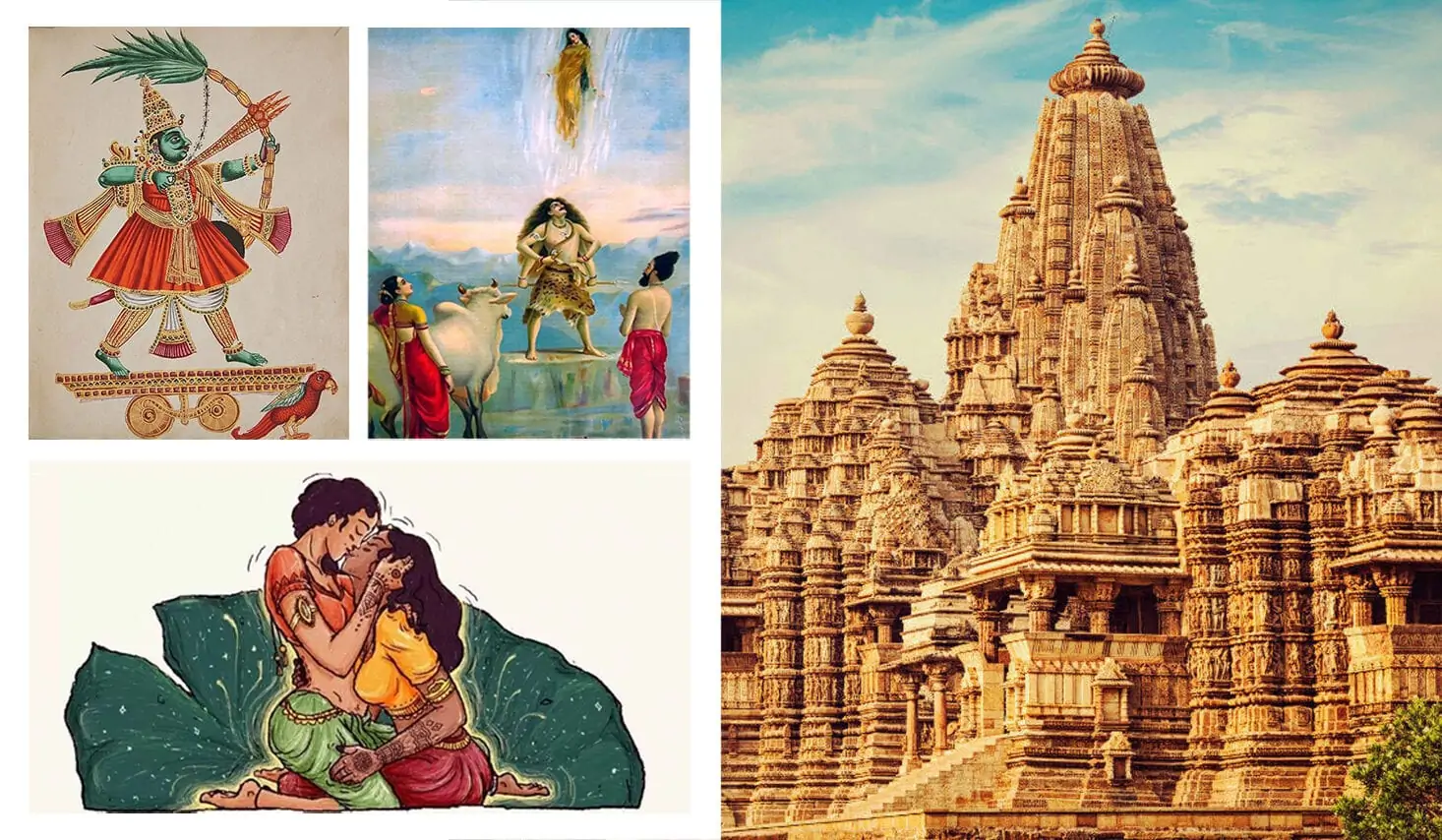The strands of LGBTQ identity have long been weaved into the immense tapestry of India’s rich cultural past, sometimes concealed under societal standards and colonial legacy. From ancient recognitions in Vedic writings to the complexity of colonial-era laws, the experience of LGBTQIA+ people in India has been marked by struggles, emergence, and changing narratives across millennia.
This article delves into the various layers of this journey, highlighting major milestones, cultural transformations, legal struggles, and public opinions that have influenced the landscape of LGBTQIA+ rights in India. From pre-1900s recognition to current advocacy, the arc of LGBTQ experiences in India exemplifies persistence, determination, and the never-ending struggle for acceptance and equality.
Ancient Roots and Acceptance:
1. Homosexuality has been part of human history for millennia. Basically, even during ancient times, like the Vedic Age around 3102 B.C., there were understandings of non-hetero sexual identities. Research by the Gay and Lesbian Vaishnava Association (GALVA) suggests that homosexuality was recognised as “tritiya prakriti,” or the third nature.
2. The transgender community in India has roots dating back to ancient times. For instance, the Koovagam festival, which originated in the third century BC, celebrates transgender identities. Additionally it also commemorates the story of Krishna assuming a female form to marry Aravan before the Mahabharata battle. This festival remains a significant annual gathering for trans people in India, highlighting the deep historical acceptance of diverse gender identities

3. Furthermore the temples constructed between the 6th and 14th centuries, such as those in Puri and Tanjore, depicted queer relationships through explicit imagery. Although modern society deems such depictions as taboo, these ancient artworks showcased diverse forms of love and desire.
4. Historical figures like Babur, the first Mughal Emperor, also had documented same-sex attractions. Babur’s infatuation with a teenage boy named Baburi is recorded in his memoirs, “Babur Nama,” and through love poems composed by the emperor.
Shifting Attitudes and Early Activism:
5. Attitudes towards homosexuality shifted in the mid-20th century. Mahatma Gandhi, revered as the father of the Indian nation, expressed disapproval of homosexuality, considering it a dangerous doctrine.
6. The 1986 article penned by journalist Ashok Row Kavi for Savvy Magazine marked a significant milestone as India’s first public “coming out” story. Kavi’s courage paved the way for greater visibility and acceptance of LGBTQ individuals in Indian society.
7. In 1987, two policewomen from Madhya Pradesh, Leela and Urmila, challenged societal norms by marrying each other. Their bravery came at a cost as they were discharged from duty following their marriage ceremony.

8. The founding of India’s first magazine for queer men, BombayDost, by Ashok Row Kavi in 1990 provided a platform for LGBTQ voices and experiences. This publication played a crucial role in fostering community and raising awareness about LGBTQ issues.
9. Furthermore the year 1992 saw the first protest for gay rights in India during a conference on AIDS and healthcare in New Delhi. LGBTQ activists demanded recognition and rights for gay men, highlighting the need for inclusive health policies.
10. Gita Thadani’s establishment of Sakhi, a helpline and resource center for queer women, in the 1990s provided much-needed support and visibility for lesbian, bisexual, and transgender women in India. Sakhi facilitated networking and community building among queer women across the country.
Representation and Advocacy:
11. “BOMGaY,” a short film produced in 1996, offered a glimpse into the lives of queer individuals in Mumbai. Irrespective of its limited release, the film remains an important contribution to queer cinema in India, showcasing diverse narratives and experiences.
12. Thadani’s book “Sakhiyani: Lesbian Desire in Ancient and Modern India,” published in 1996, explored the history of lesbian desire in Indian culture. By examining ancient texts and contemporary experiences, Thadani shed light on the rich and complex tradition of female same-sex relationships.
13. In 1997, activist Arvind Narrain organised the first LGBTQ rights seminar at the National Law School of Bangalore, sparking conversations about queerness in educational institutions. This seminar laid the foundation for future advocacy and activism within academic settings.
14. The establishment of helplines like Sangini and Humraz in 1997 provided crucial support and resources for LGBTQ individuals facing crisis situations. These helplines offered a lifeline for those in need and played a vital role in connecting LGBTQ communities across India.
15. The Calcutta Rainbow Pride Parade, India’s first-ever gay pride parade held in 1999, marked a significant moment in LGBTQ history. Although having modest beginnings, the parade sent a powerful message of pride and visibility to the nation.
Inclusivity in Action

16. CALERI’s release of the “Lesbian Emergence” manifesto in 1999 addressed the invisibility and marginalisation of queer women in Indian society. This manifesto aimed to amplify the voices and experiences of lesbian and bisexual women, challenging societal norms and stereotypes.
17. The publication of “Facing the Mirror: Lesbian Writing from India” in 1999 provided a platform for queer women to share their stories and experiences. This anthology of writings increased visibility and representation for lesbian voices in Indian literature.
18. The filing of the first petition against Section 377 by the Naz Foundation and The Lawyer’s Collective in 2001 marked a significant moment in the fight for LGBTQ rights in India. This legal challenge sought to overturn discriminatory laws and advocate for the rights of queer individuals.
19. In 2001, Mumbai-based trans activist Gauri Sawant defied societal norms by adopting an orphaned girl, challenging stereotypes about trans parenthood. Sawant’s story highlighted the resilience and love within the transgender community, inspiring others to rethink traditional notions of family and identity.
20. Prince Manvendra Singh Gohil of Rajpipla’s public coming out in 2002 marked a watershed moment for LGBTQ visibility in India. Although facing family pressure, Prince Manvendra’s bravery and openness paved the way for greater acceptance and understanding of queer identities.

Pride and Setbacks:
21. The Chennai Rainbow Coalition’s organisation of the first Rainbow Pride Walk in 2009 demonstrated the growing visibility and solidarity within the LGBTQ community in South India. This event brought together diverse LGBTQ groups and allies to celebrate pride and advocate for equality.
22. The Supreme Court’s decision to recriminalise homosexuality in 2013 dealt a devastating blow to LGBTQ rights in India. The overturning of the Delhi High Court’s progressive judgment reinstated colonial-era laws, leaving LGBTQ individuals vulnerable to discrimination and persecution.
23. Despite setbacks, LGBTQ communities across India continued to assert their visibility and rights. Guwahati’s first Pride walk in 2013 showcased the resilience and determination of LGBTQ individuals in the Northeastern states.

24. The episode on “Accepting Alternate Sexualities” on the TV show “Satyamev Jayate” in 2013 marked a significant moment for representation in mainstream media. Hosted by Aamir Khan, the episode challenged stereotypes and promoted acceptance of diverse sexual orientations and gender identities.
25. The participation of transgender artists in creating Durga Puja idols in Kolkata for the first time highlighted the growing acceptance and inclusion of transgender individuals in religious and cultural celebrations. This gesture symbolized a broader shift towards embracing diversity and challenging traditional gender norms.
An Evolving Narrative:
From the gloomy depths of colonial-era legislation to the spotlight of legislative victories and cultural celebrations, LGBTQ people’s journey is one of endurance and transformation. However, despite the successes, the shadows of ongoing struggles—discrimination, violence, and legal ambiguities—continue. The path to full equality is plagued with difficulties. But with each step forward, the chorus of voices seeking justice and inclusion becomes stronger. As India moves towards a future where love knows no bounds, let us learn from the past. And embrace the diversity of the present, to chart a course for a more inclusive tomorrow, one in which every individual can live proudly and authentically. Regardless of who they love or how they identify.
Next Read: Blood Sisters: Lesbian Activists Who Fought the AIDS Crisis Together



